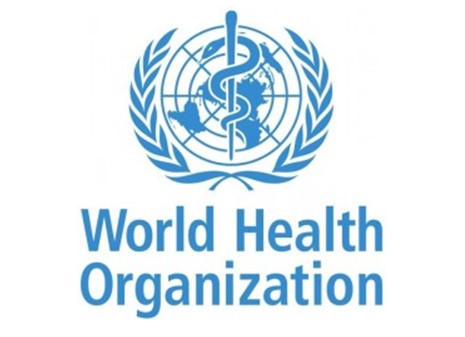In a pivotal move towards addressing one of the world’s most underrecognized health challenges, the World Health Organization (WHO) today announced the inclusion of noma (cancrum oris or gangrenous stomatitis) in its official list of neglected tropical diseases (NTDs). This decision, which was recommended by the 17th meeting of the Strategic and Technical Advisory Group for Neglected Tropical Diseases (STAG-NTD), underscores WHO’s commitment to expanding health services to the world's most vulnerable populations.
Noma, a severe gangrenous disease of the mouth and face, primarily affects malnourished young children (between the ages of 2 and 6) in regions of extreme poverty. It starts as an inflammation of the gums, which, if not treated early, spreads quickly to destroy facial tissues and bones. It frequently leads to death, with survivors suffering severe disfigurement.
Accurate estimation of the number of noma cases is challenging due to the rapid progression of the disease and the associated stigma, which contributes to leaving many cases undiagnosed. Cases of noma are mostly found in sub-Saharan Africa, although cases have also been reported in the Americas and Asia.
Evidence indicates that noma is caused by bacteria found in the mouth. There are multiple risk factors associated with this disease, including poor oral hygiene, malnutrition, weakened immune systems, infections, and extreme poverty. Noma isn't contagious but tends to strike when the body's defenses are down.
Early detection is essential, as therapy is most effective at the early stages of disease when it causes severe swollen gums, known as acute necrotizing gingivitis. Treatment involves antibiotics, advice and support on practices to improve oral hygiene with disinfectant mouthwash (salt water or chlorhexidine could be used) and nutritional supplements. If diagnosed during the early stages of the disease, treatment can lead to proper wound healing without long-term consequences. In severe cases though, surgery may be necessary. Children who survive the gangrenous stage of the disease are likely to suffer severe facial disfigurement, have difficulty eating and speaking, face social stigma and isolation, and need reconstructive surgery.
“Noma is more than a disease, it is a social marker of extreme poverty and malnutrition, affecting the most vulnerable populations,” said Dr Tedros Adhanom Ghebreyesus, WHO Director-General. “By classifying noma as a neglected tropical disease, we are shining a light on a condition that has afflicted marginalized communities for centuries. We are committed to working with affected countries and communities to address the drivers of noma, and alleviate the suffering it causes.”
The recognition of noma as an NTD aims to amplify global awareness, catalyse research, stimulate funding, and boost efforts to control the disease through multisectoral and multi-pronged approaches. Interventions addressing the burden of this devastating disease will contribute to achieving universal health coverage, as they will specifically target pockets of underserved populations.
Noma is often managed by oral health programmes in endemic areas and collaboration with NTD programmes at operational level can be strengthened, notably by integrating noma within the activities aimed at detecting and managing skin-related neglected tropical diseases (skin NTDs).
The Government of Nigeria spearheaded action to have noma included in the list of NTDs. In January 2023, an official request was submitted to WHO on behalf of 32 Member States. The request was supported by a detailed dossier highlighting the burden and distribution of noma and providing evidence to demonstrate fulfilment of the criteria set by WHO. Several partner institutions contributed by sharing information and conducting advocacy.
The formal process for adding new conditions to the NTD list was established by the STAG-NTD in 2016. Since then, the following diseases have been added: mycetoma (2016); chromoblastomycosis and other deep mycoses (2017; merged in a single group with mycetoma); scabies (2017); snakebite envenoming (2017); and noma (2023). Currently, with noma, WHO’s NTD list includes 21 diseases.
Distributed by APO Group on behalf of World Health Organization (WHO).
Latest Stories
-
EC releases 2024 presidential election results for 275 constituencies, 1 still outstanding
9 minutes -
Uganda’s controversial tweeting general quits X
22 minutes -
Daily Insight for CEOs: Building resilient supply chains in Ghana’s evolving market
53 minutes -
Karpowership Ghana renovates St Mark Anglican School in Essikado
1 hour -
Post-election violence: Dr. John Osae Kwapong calls for better security and public education
1 hour -
Why Mahama must keep an eye on the environment in ‘resetting’ Ghana
1 hour -
Macdonald Oliver Kofi Ntsiful Baiden
1 hour -
Kenya Airways applauds ISRQ 2024 champions as they fly to Dubai for Edu-Fun trip
1 hour -
2009 Black Satellites World Cup winning squad invited to collect matured investment cheques
2 hours -
Gradual reduction of E-Levy better than complete abolishment – Dr Kwame Asante
2 hours -
It’s a clever appointment – Franklin Cudjoe on 1st batch of ministerial nominees
2 hours -
GPL: Yaw Preko confident Nsoatreman will avoid relegation
3 hours -
Rationalize Ghana’s tax system – AGI tells government
3 hours -
StarTimes set to return as broadcast partners after successful talks with GFA
3 hours -
Artiste of the Year conversation without me is ignorance – Amerado
3 hours

